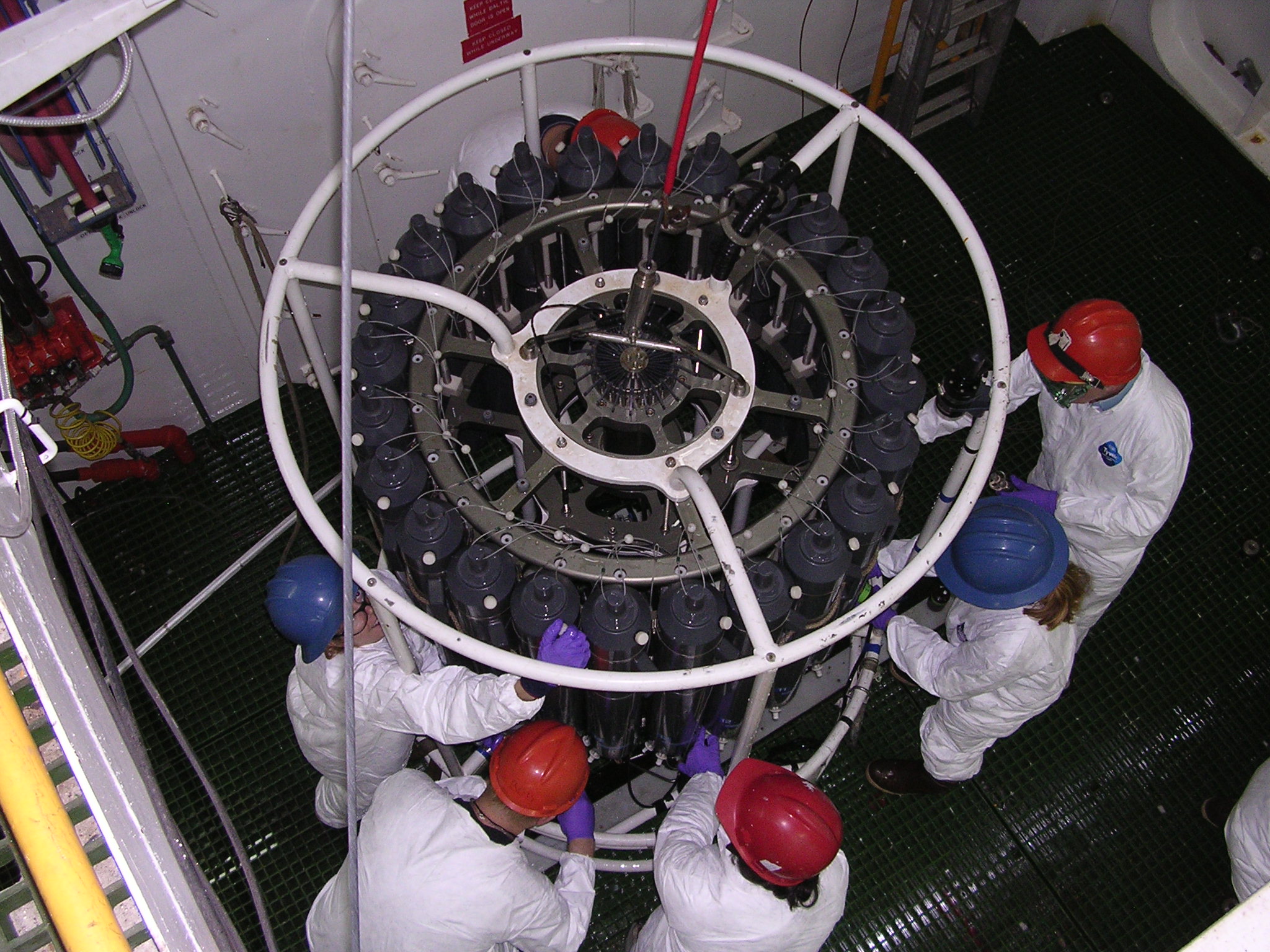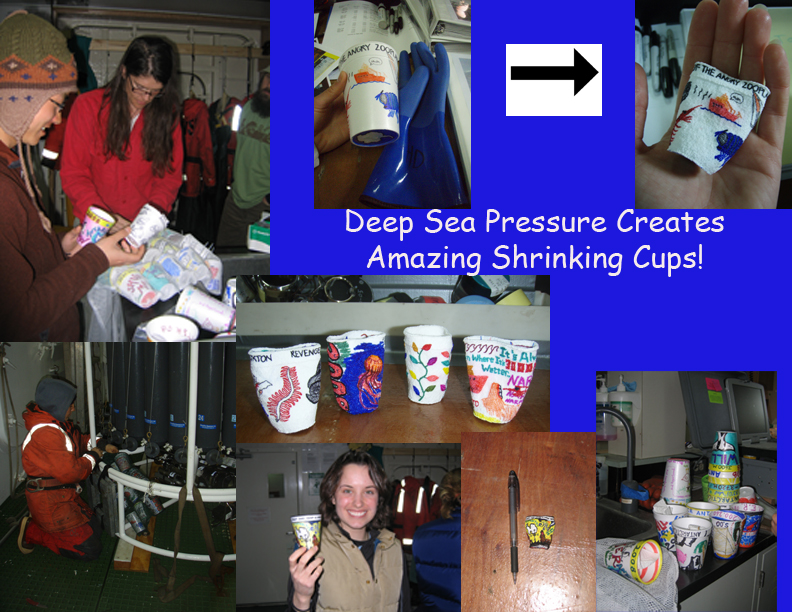Water Sampling
Monday we reached the first station of the southernmost portion of the LTER grid and started the “200” line. We began sampling offshore at station 200.260 (“260” indicates that the station is 260 km from shore.) A major part of this procedure involved deploying and retrieving a deep CTD (Conductivity, Temperature, Depth) cast. The cast descended 3,694 m (about 12,005 ft!) to the seafloor, gathering information on the water column and capturing water samples from specific depths on its return to the surface.
The Gould’s crew did an excellent job positioning the ship and safely deploying the CTD’s carousel, a task made even more difficult by the foggy weather and large, rolling swell.

The CTD carousel being prepared for deployment below deck.
Following the tradition of previous cruises, everyone had a chance to decorate a styrofoam cup and send it down to the depths! Each person received an 8 or 12 oz. styrofoam coffee cup, and drew colorful designs on the outside and inside using Sharpie markers. Many of these creative cups included information about the date, depth, and location of the cast, as well as pictures of “killer” zooplankton, miniature Goulds, Adelie penguins, and other Antarctic wildlife. The cups were collected before the cast and stuffed them with paper towels (to prevent collapse) then zip-tied into mesh bags that were affixed to the bottom interior of the CTD carousel.
As the cups descend, they are subjected to greater and greater water pressure. Pascal’s law (Pressure = fluid density * gravitational pull * height of water column) describes how pressure increases with depth. Basically, as an object sinks deeper in the water column it “feels” the weight of more and more water on top of it. Scuba divers use the following rule of thumb to determine pressure at different depths: 10 meters of water exert roughly the same amount of pressure as 1 atmosphere. In other words, a diver who is 10 m underwater experiences 2 atmospheres of pressure. This means that our styrofoam cups were under about 370 atmospheres of pressure at the seafloor!

At bottom right, the creatively colored cups are stacked and ready to make the plunge. At top left, Heidi Geisz and Albert Kao stuff them with paper towels to prevent collapse and zip-tie them into mesh bags. At lower left, Meghan King ties the bags to the CTD carousel. At center, upper center, and upper right, you can see the result! At bottom center, Erin Morgan displays her cup for a “before” picture. To her right is the “after” picture, showing the shrunken cup next to a pen for scale.
As the cups sink, the water pressure squeezes the air out of the spaces in the styrofoam. This causes the cups to shrink to miniature size! In the upper right is the “angry zooplankton attacking the Gould” cup before and after descent into the depths. Shrinking also makes the colors very vibrant and beautiful!

 No comments
No comments 






